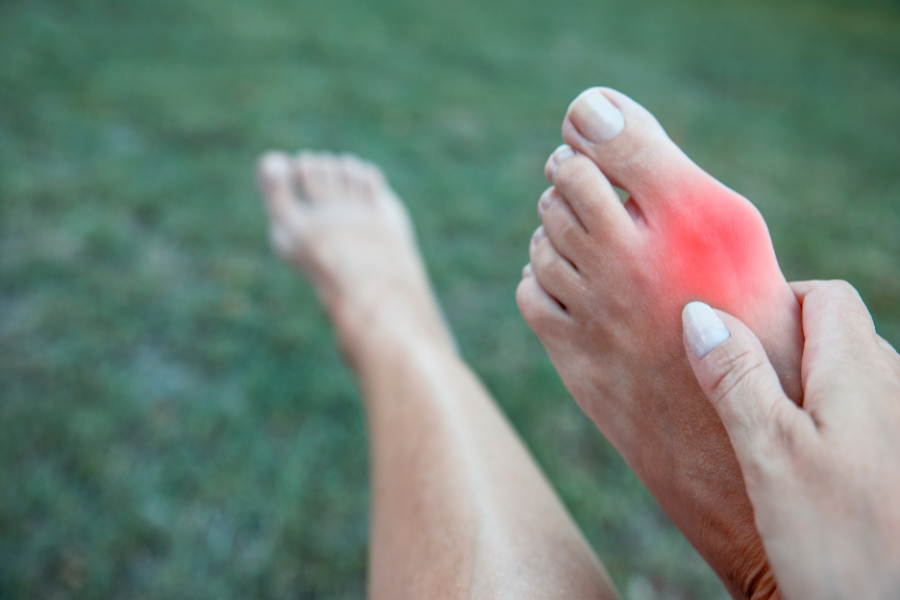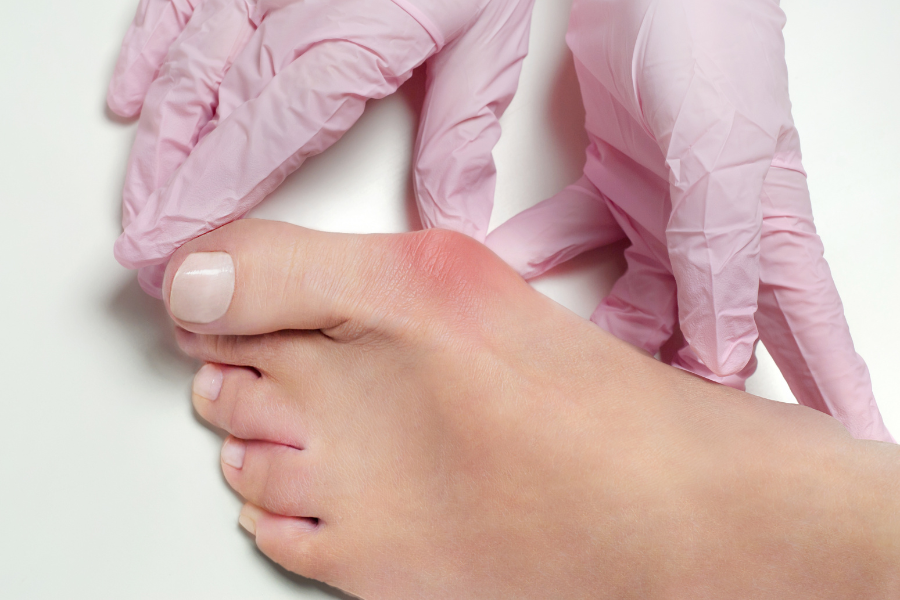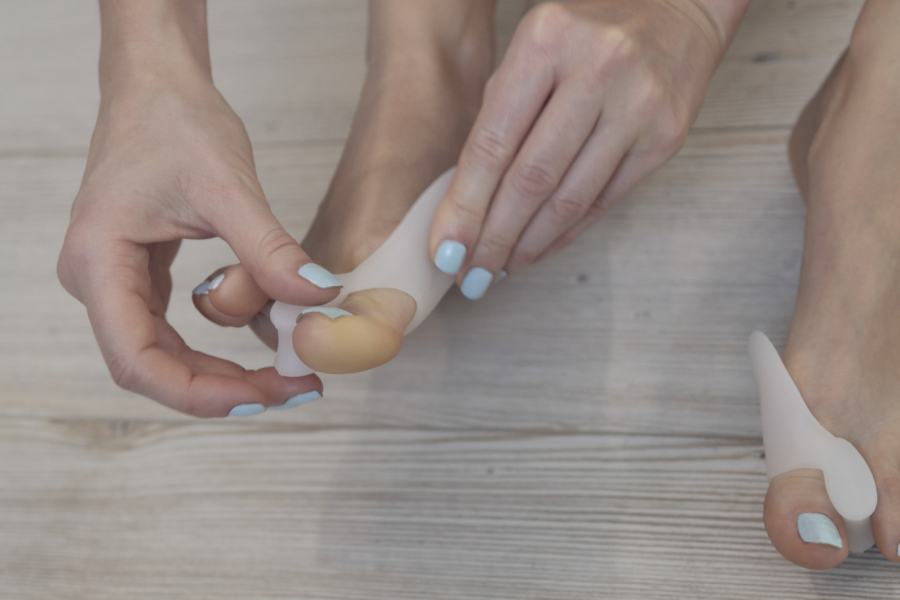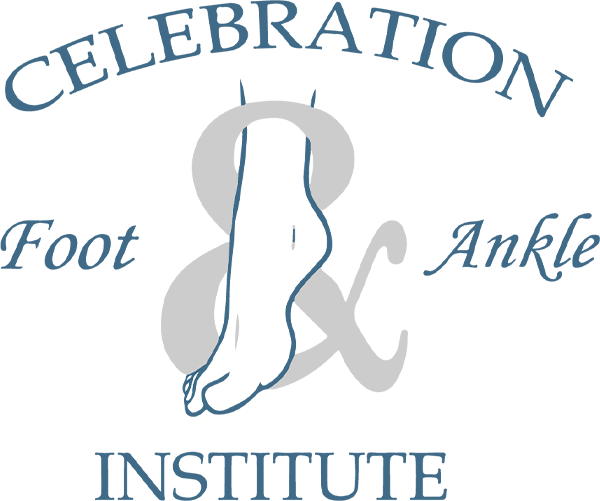 What is a bunion?
What is a bunion?- What are the symptoms of a bunion?
- What causes bunions?
- How do doctors diagnose and treat bunions?
Our feet can take a lot of abuse before we realize something is wrong. From cramming our toes into pointed shoes to walking around in flip-flops without arch support, the delicate structures in our feet can take a beating.
In fact, your feet may be the most neglected part of your body. As a consequence, we often overuse our feet to the point of causing them damage, resulting in painful conditions that impair our ability to walk. One of these foot conditions is a problem known as hallux valgus or, more commonly, bunions.
One in three Americans suffers from bunions. What is this condition? What are the symptoms and treatment of bunions?
What Is a Bunion?
At the base of the big toe is a joint known as the metatarsophalangeal (MTP), which connects the big toe to the foot. A bunion is a bony deformity that occurs within this joint that causes the base of the big toe to grow sideways.
The deformity can make your big toe gradually turn inward as the bony protuberance grows, putting unnecessary pressure on the foot’s delicate structures. Over time, the bunion can warp your foot so much that the big toe may begin to cross over the toe next to it.
What Are the Symptoms of Bunions?
 You may notice the bulging bone of a bunion before you experience pain, which often results when the joint becomes swollen and turns red.
You may notice the bulging bone of a bunion before you experience pain, which often results when the joint becomes swollen and turns red.
Over time, bunions can cause:
- Arthritis of the big toe
- Difficulty walking or running
- Pain and stiffness
- Swelling and protruding of the big toe joint
- Discomfort wearing shoes
Despite these common issues, some people don’t experience bunion pain or discomfort. However, these instances are rare.
What Causes Bunions?
We don’t know what exactly causes a bunion to form. However, you are more susceptible to the condition if you have a family history of bunions. A bunion may also be more likely to form if you repeatedly squeeze your foot into shoes with pointed toes or narrow soles.

In general, the likelihood of you developing bunions will depend on your foot shape, its structure, and your genetics. Bunions run in families, so if your mother has bunions, you may also develop them at some point in your life. Flat feet and low arches also increase your risk of developing bunions, as do loose tendons and joints. Additionally, the shape of the bones in your big toe can play a factor.
Pointed shoes only exacerbate the issue, especially high heels, which tip the weight of the body forward toward the front of the shoe, applying excessive pressure on the toes. This is probably why women are about 10 times more likely than men to have bunions.
Jobs that put a lot of stress on your feet can also cause bunions. For similar reasons, women may develop bunions during pregnancy due to the added weight.
Rheumatoid arthritis is commonly associated with bunion formation, as the disease attacks joint tissue, causing pain and inflammation.
How Do Doctors Diagnose and Treat Bunions?
Unlike many medical conditions, bunions are easy to diagnose because of their appearance. Because of this, your doctor will likely be able to determine if you have a bunion just by looking at your foot and how you stand.
However, the doctor may also order an X-ray after a careful foot examination to confirm the diagnosis. The X-ray can also indicate the presence of arthritis and the extent of damage to the joint.

Bunions typically occur in stages:
- Stage 1 – the mild stage, with a small bump on the side of the foot
- Stage 2 – the MTP joint begins to bend so that the big toe points toward the second toe
- Stage 3 – the big toe starts to rotate on its axis away from the body’s midline
- Stage 4 – the MTP joint dislocates, causing the first toe to ride up over or under the second toe
Bunions grow progressively worse unless the condition is treated, and the only way to repair a bunion is through surgery. However, before surgery is necessary, doctors may prescribe more conservative treatments to relieve pain and prevent the condition from worsening:
- Bunion pads (to cushion the bone against the shoe)
- Changes to footwear (to accommodate the bony growth)
- Medical taping (to realign the foot)
- Orthotic devices
- Pain relievers
- Physical therapy
- Steroid injections (to lessen swelling and pain)
Without the proper treatment, the bunion may grow to the point that it can be difficult to walk without pain. At that point, your doctor may recommend a bunionectomy to cut and remove the protruding bunion, realigning the bones to improve comfort and restore mobility.
Suffering from bunions? At Celebration Foot and Ankle, our experienced foot and ankle specialists can improve the health of your feet, helping you live comfortably and pain-free.
Contact us if you’re experiencing bunion pain and discomfort. We’re here to help


